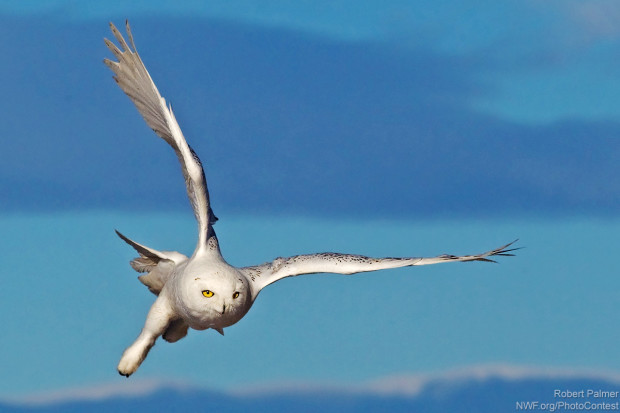We have much more to do and your continued support is needed now more than ever.
Snowy Owl – A Connection to the Far North (and the Perils of Keystone XL)
In Washington these days, the idea that we can build the 35 million-gallons-per-day Keystone XL tar sands export pipeline and suffer no ill consequences is treated as serious thinking. But a visitor rarely seen in DC has given our nation’s capital an unexpected reminder of what’s at stake.
The sudden arrival of snowy owls up and down the East Coast and as far south as Florida is a surprise winter gift from North America’s northern realms, and people are flocking to airports, beaches and parking lots to see them. This ‘irruption’ as the ornithologists call it is one of the largest known migrations of snowy owls in U.S. history.

The Obama Administration is now deciding the fate of the Keystone XL tar sands pipeline, a 1,700-mile conduit through the heartland of America to carry tar sands oil to Gulf ports for export. Canada’s tar sands oil development in Alberta is already causing broad disruption, degrading habitat, leaving behind toxic ponds and polluting the air and water. Approving the Keystone XL pipeline would mean massive expansion of the production, refining and use of the dirtiest fuel on the planet, which would further threaten wildlife that use the area, like whooping cranes, bald eagles, gray wolves and caribou.
More tar sands extraction means more carbon pollution, which, thankfully, the recent State Department analysis admits for the first time. If we look beyond the Department’s sales pitch, the document says that the Keystone XL pipeline could dramatically increase the carbon pollution that is disrupting the world’s climate. In his January State of the Union address, President Obama once again stated that climate change is a major threat and he promised to leave a legacy so that our children’s children can be confident that “we did all we could to leave them a safer, more stable world, with new sources of energy.” President Obama can deliver on his promise to protect our children and theirs from the worst impacts of climate change by killing Keystone XL.
Climate scientist James Hansen has said that if Canada is able to develop its tar sands oil reserves, it will be “game over.” This pipeline threatens not only people living in America’s heartland, but people around the world who care about our planet’s future, and sadly, future generations. The Keystone XL pipeline decision symbolizes the choice we face between clean and dirty energy, a warmer planet or a livable planet. We cannot curb climate change if we continue to rely on polluting fuels like tar sands oil. Keystone XL should not be an enabler.
Take Action
President Obama has the science, the facts, the experts and the analyses to deny this permit. He should heed the call of the snowy owl and stop Keystone XL.





















